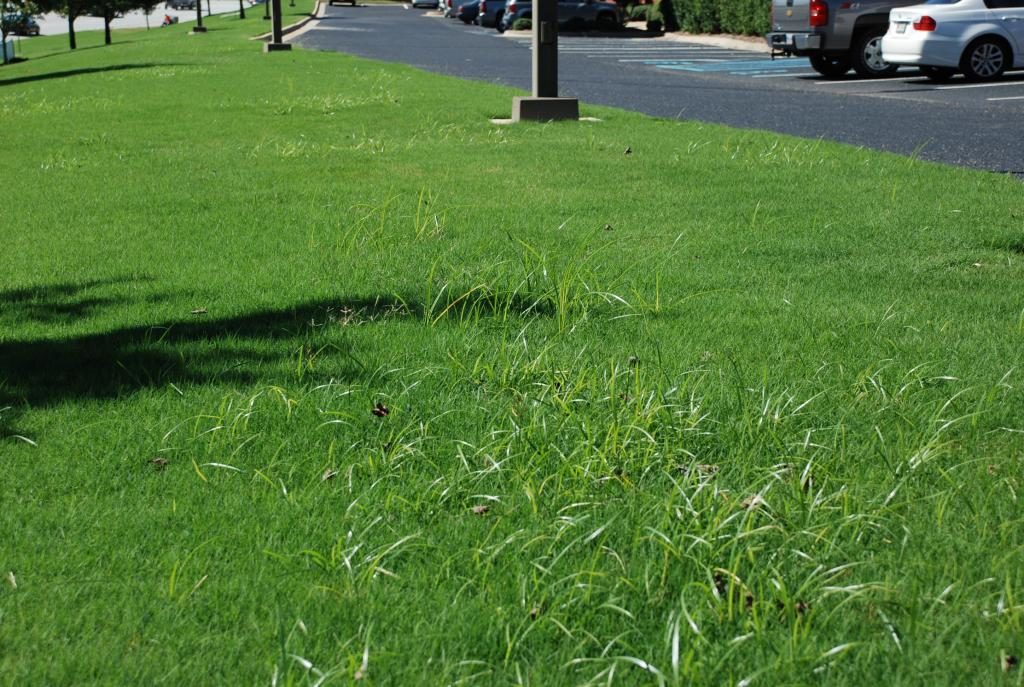 Similar to most lawn weeds, nutsedge is a weed that is noticeable and can deprive your turf area from obtaining moisture and nutrients. Nutsedge resides in landscapes and gardens that contain wet soil, often an indication of poor drainage, frequent irrigation, or broken sprinklers.
Similar to most lawn weeds, nutsedge is a weed that is noticeable and can deprive your turf area from obtaining moisture and nutrients. Nutsedge resides in landscapes and gardens that contain wet soil, often an indication of poor drainage, frequent irrigation, or broken sprinklers.
Physical Appearance of Nutsedge
Nutsedge has been known to grow up to 3 feet tall with various colors depending on weather conditions. Two common colors of nutsedge leaves are yellow and green. As for the spiky head part of the lawn weed, colors can be either yellow or purple.
Nutsedge is relatively easy to identify on your lawn due to their rapid growth structure. When growing, the emergence of nutsedge weeds is distinctive and separate from its surrounding turf area. If left untreated, lawn weeds like nutsedge can spread throughout your lawn causing an unsightly appearance.
Controlling Nutsedge
Should I pull on the roots to remove the nutsedge weeds? If you wish to remove nutsedge weeds in your lawn, pulling on the roots will not fully remove the pesky weed. There are tiny tubers inside the roots for further growth development. Maintaining your lawn at a higher mowing height will help reduce the growth of nutsedge.
The best method for controlling nutsedge is contacting your local lawn care service professional to apply an application of nutsedge control on your lawn. In most cases, you may notice some yellowing in the turf grass which is only temporary until the nutsedge fades away. Avoid mowing the lawn for 3-5 days after the application is applied.
For further information regarding lawn weeds treatments like nutsedge control, please contact Lawn Doctor of Pepper Pike-Beachwood at (216) 868-4036 today!
Image source: Nutsedge Infestation, Auburn Agriculture <http://cses.auburn.edu/weedscience/wp-content/uploads/sites/58/2015/03/infestation1.jpg>
